(单词翻译:单击)
Chemistry as we learn it in school can be a pretty dry subject that involves memorizing a lot of numbers and chemical reactions. But that doesn't have to be the case, and it turns out that there are a lot of fascinating stories about how we first learned about the elements on the periodic table. Chemistry has a lot of neat stuff buried in its history.
我们在学校中所学的化学是相当枯燥的科目,涉及记忆大量数字和化学反应。但也不一定,从前人们研究化学周期表上的元素时就有很多吸引人的故事。时过境迁,很多关于化学的趣闻轶事都湮没在历史的尘埃中了。
10.Seven Elements From One Mine
10.一个矿里藏了七种元素
Ytterbium, yttrium, terbium, and erbium—they're a mouthful to say, and there's a reason that they're listed together. All four were found in a rather unlikely way, taking their name from the quartz quarry in Ytterby, Sweden, where they were unearthed. The quarry is known as something of a gold mine when it comes to documenting new elements. Gadolinium, holmium, lutetium, scandium, tantalum, and thulium were also found there. If it seems like that might cause confusion, it absolutely did.
镱、钇、铽和铒这四种颇为拗口的元素被排列在一起是有原因的,它们都是通过几近不可能完成的手段采获的,其名称都取自其发现地——瑞典伊特比的一处石英采矿场。这处采矿场以黄金矿山闻名,彼时在黄金矿山发现的诸如金轧、钬、镥、钪、钽和铥这些元素都被载入了新元素。没错,它们的确很容易混淆。
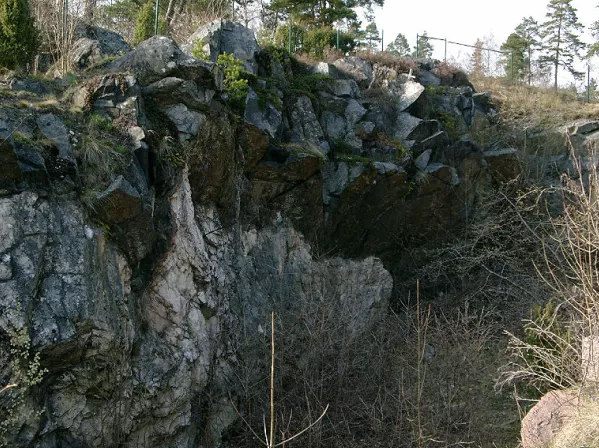
In 1843, a Swedish chemist named Carl Gustaf Mosander took gadolinite and separated it into the rare-Earth materials yttria, erbia, and terbia. Once he shared his findings, though, something got lost in translation, and erbia became known as terbia, while terbia was called erbia. In 1878, the newly christened erbia was further broken down into two more components—ytterbia and another erbia. It was surmised that ytterbia was a compound that included a new element, which was named ytterbium. This compound was separated into two elements, neoytterbium and lutecium. Are you confused yet? Would it help that neoytterbium got another name change and became just plain old ytterbium again, and lutecium became luteium? The end result of what came out of the Ytterby quarry was a whole handful of elements that were found for a couple of reasons. The mine was ripe for the picking, thanks to glacier activity during the last ice age. There was also a rather odd coincidence going on around the same time: The mine was originally opened to mine feldspar, which had recently been highlighted as a key component in the creation of porcelain. Making porcelain had been a closely guarded secret of the Far East, until some alchemists got involved. The mine at Ytterby had opened to help with the demand for porcelain, and chemist Johan Gadolin was working at the mine because of his friendship with an English porcelain maker.
1843年,瑞士化学家C.G.莫桑德尔把硅铍钇矿分解为稀土材料氧化钇、氧化铒和氧化铽。然而有一次当他分享他的发现时,翻译漏掉了字母,于是氧化铒被认作氧化铽,氧化铽被认作氧化铒。1878年,新命名的氧化铒被分解成了两部分——氧化镱和新的氧化铒。人们猜测氧化镱是种包含了新元素的化合物,这种新元素就叫做镱。氧化镱被分解为镱和镥两种元素。你已经困惑了吗?neoytterbium是否会再次变为简单的旧名ytterbium,而lutecium又是否会改为luteium?来自伊特比采矿场的矿元素最终被归为一种元素,这种归类来之有因。由于冰川时期末期的冰川活动,矿藏已经足够成熟到可以开采。有个相当奇怪的巧合在同一时间发生:矿藏最初用于开采长石,后来却被强调是生产瓷器的关键因素。在远东制作瓷器的过程是被严格保密的,直到后来一些炼金师参与进来才逐渐被公开。开放的伊特比矿藏可以帮助制作瓷器,化学家加多林为了帮助他的朋友--一位英国瓷器生产商,而在这里工作。
9.Barium Was Mistaken For Witchcraft
9.钡曾被认为是巫术
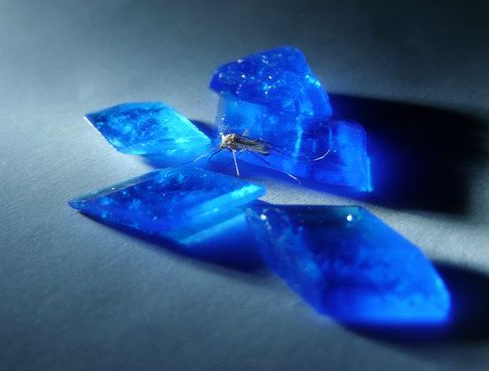
Today, barium is a pretty common element that's used to make paper whiter, paints brighter, and as a colorant to block X-rays and make problems with the digestive system more noticeable in scans. In the Middle Ages, it was a well-known substance, but not as we think of it today. Smooth stones, found mostly around Bologna, Italy, were popular with witches and alchemists because of their tendency to glow in the dark after only being exposed to light for a short amount of time.
今天钡是一种非常常见的元素,曾用于生产白纸、涂料和阻挡X射线的着色剂,在扫描中也会借含钡的着色剂增加消化系统清晰度。在中世纪,钡是一种众所周知的物质,但和我们现在的理解有所出入。当时有种光滑的石头——多出现在意大利博洛尼亚——在女巫和炼金师之间十分流行,因为它们有一种特性:在光照中静置片刻后再放到黑暗处就会闪光。
In the 1600s, it was even suggested that the so-called Bologna stones were actually philosopher's stones. They had mysterious properties: Heating them up would cause them to glow a strange, red color. Expose them to sunlight for even a few minutes, and they would glow for hours. A shoemaker and part-time alchemist named Vincentius Casciorolus experimented on the stone, trying everything from using it to turn other metals into gold to creating an elixir that would make him immortal. He failed, sadly, and for almost another 200 years, the rock was nothing more than an odd curiosity that was associated with the mysteries of witchcraft. It wasn't until 1774, when Carl Scheele (of Scheele's green fame), was experimenting with Earth metals, that barium was recognized as something independent. Originally calling it terra ponderosa, or "heavy earth," it wouldn't be for another few decades until an English chemist would finally isolate and identify the element that made the witches' stones glow.
在16世纪,有人提出所谓的博洛尼亚石头实际上是点金石。他们有着神秘的属性:把它们加热几分钟,接下来的几个小时它们都会发光。鞋匠文森特·卡斯诺罗也是个业余的炼金术士,他用尽各种办法希望利用博洛尼亚石把其他金属变成金子,并试图炼出长生不老药。令人遗憾的是他失败了。在接下来的200年中,博洛尼亚石都被认为是与神秘巫术有关的奇珍异宝。1774年,在卡尔·舍勒(因研究软锰矿而享有盛名)的碱土金属实验之前,钡元素一直都被视作独立存在的一种元素。最初钡金属被叫做碳酸钡或者"重土",直到一位英国化学家分离并鉴定了这能使女巫石发光的元素,才避免了之后几十年人们继续误解钡元素。
8.Coincidental Helium
8.发现氦的巧合
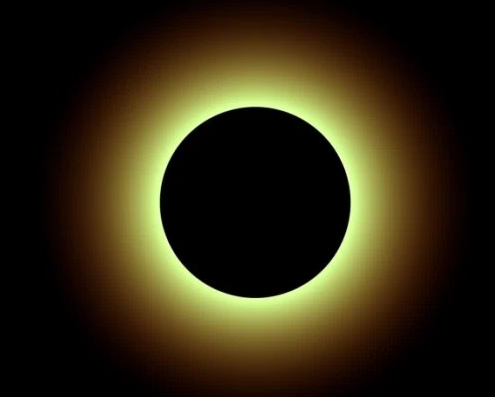
Scientific history is filled with instances where people race to be the first to document or explain something, but finding helium ended in a bizarre tie.
从古至今,科学家们一直都争相探索猎奇、发现真理,但发现氦元素的背后有着一个异常离奇故事。
The scientific community was new at studying the emissions from the Sun in the late 19th century, and they thought that the best (and perhaps only) way to do so was to look at it during an eclipse. In 1868, Pierre Jules Cesar Janssen set up shop in India, where he watched the solar eclipse and saw something new—a yellow light that was previously unknown. He knew that he needed to study it more in order to determine just what this yellow light was, so he ended up building the spectrohelioscope to look at the Sun's emissions during the day. In a bizarre coincidence, an English astronomer was going the same exact thing at the same exact time, half a world away. Joseph Norman Lockyer was also working on looking at the Sun's emissions, also during the day, and he also saw the yellow light. Both men wrote papers on their findings, sending them off to the French Academy of Sciences. The papers arrived on the exact same day, and although they were first rather ridiculed for their work, it was later confirmed, and the two astronomers shared credit for the find.
19世纪后期,在科学界有关太阳辐射的研究还是个新兴领域,科学家们认为最好(或许也是唯一)的研究方法即是在日食之时观察太阳。1868年,皮埃尔·塞萨尔·詹森在印度开了家自己的店铺,在那里他不仅看到了日食,还观察到一种不同寻常的现象——未知的黄色光芒。当时的皮埃尔意识到自己要想知道这种奇特光芒的本质就得补充新的知识。在这种想法的驱使下,他最终成功发明了太阳单色光观测镜用以在白天观察太阳辐射。说来也是巧合,远在半个地球之外的英国天文学家约瑟夫·诺尔曼·洛克耶在同一时间恰巧也做着与皮埃尔同样一件事——在白天观察太阳辐射现象,而且他也看到了黄色的光。后来两人均将自己的研究发现整理写成论文,寄送给法国科学院,两篇文章也颇为神奇地在同一时刻到达目的地。一开始二人的研究成果颇受嘲笑,然而事实表明他们确实作出了伟大的科学贡献,应共享此荣。
7.The Great Name Debate
7.命名之争
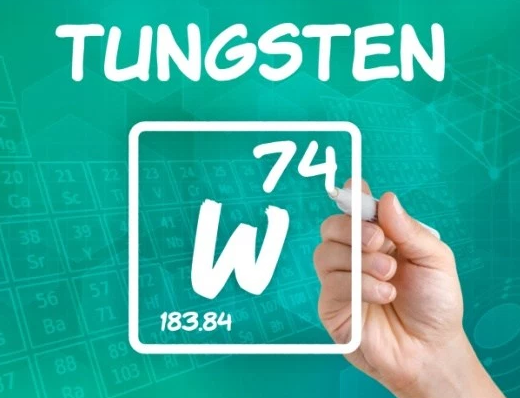
A lot of the names and symbols of the elements don't seem to match, but that's usually because the symbol comes from a Latin translation, like gold's "Au." The exception is tungsten, whose symbol is "W."
许多化学元素的名称与符号看起来并不匹配,因为元素的符号通常来源于拉丁文,如金对应符号的是"Au"。不过也有例外,例如元素钨的符号就是 "W"。
The difference comes because the element had two names for a long time. The English-speaking world called it "tungsten," while others called it "wolfram" for a very cool reason: Tungsten was first isolated from from the mineral wolframite, and in some circles, it retained its old name until 2005. Even then, it didn't give up without a fight, with Spanish chemists in particular arguing that "wolfram" shouldn't have been dropped off the official information for tungsten. In fact, in most languages other than English, "wolfram" was still used, and it's the name that the men who found it, the Delhuyar brothers, requested be used. The word comes from the German word for "wolf's foam," and its use dates back to the early days of tin smelting. Before we knew anything about elements, people working the smelters recognized a certain mineral by the way it foamed when they melted it. They called the mineral "wolf's foam" because they believed that its presence consumed the tin they were trying to extract from the mineral in the same way a wolf would consume its prey. Today, we know it's the high tungsten content in the ore, but chemists fought long and hard to keep their name. They lost, but the symbol for tungsten still remains a "W."
"钨"与众不同的原因在于长久以来它一直都拥有两个名字。以英语为母语的国家称该种元素为"tungsten",而其他国家认定的名称则是"wolfram"。为什么叫wolfram呢?因为钨起初是从一种名为黑钨矿的矿石中分离出来的,在2005年以前都还保留着这种叫法。尽管那时关于钨的"名称之争"非常激烈,其中以一批西班牙的科学家最为坚持,他们认为政府应当保留"wlofram"这种官方称呼。其实除了英语之外,很多语言中仍使用"wolfram"表示钨元素,这也是钨的发现者Delhuya兄弟的要求。这个词来源于德语,意指"狼之泡沫",其起源可追溯到锡冶炼的初期。在人类对元素还一无所知的时候,冶炼工人通常依据矿物熔化时的起沫方式来进行辨别。,人们千辛万苦想要从矿物中提取锡,而钨消耗锡的程度就像狼在啃食猎物般凶猛,因此大家将含钨元素的这种矿物称为"狼之泡沫"。如今,我们都知道矿石中含有大量丰富的钨元素,却不知道一些化学家为了守护它的名字付出了多少心血。虽然他们没能如愿以偿,不过还好钨的符号至今仍然保留为 "W"。
6.Neon Lights Predate Neon
6.霓虹灯先于氖气出现
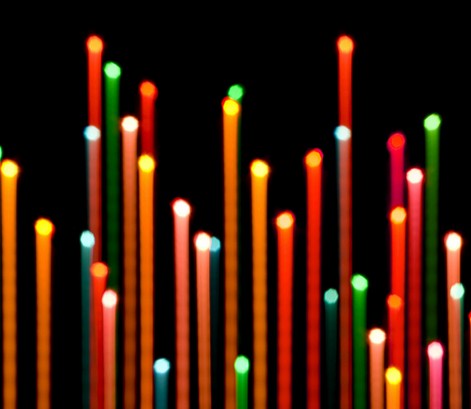
Broadway and Las Vegas certainly wouldn't be the same without the bright neon lights that have made them famous, but oddly, the creation of neon lights is an old one—one that predates knowledge of the element.
光怪陆离的百老汇和拉斯维加斯如今这么有名,但如果没有闪闪发光的霓虹灯,那这两个地方绝对会泯然于众。霓虹灯的发明是很久之前的事了,在人们对于氖气一无所知前就已经创造出了霓虹灯。
Neon is one of the noble gases and one of only six elements that's inert. Odorless, colorless, and almost completely nonreactive, neon was found along with other noble gases argon and krypton. In 1898, chemists Morris Travers and William Ramsay were experimenting with the evaporation of liquified air when they documented the new gases. Neon was first used in 1902 to fill sealed glass tubes and create the garish, unmistakeable advertising signs that we now see everywhere.They weren't the first, though; what we now know as neon signs date back to the 1850s, when Johann Heinrich Wilhelm Geissler made the first neon lights. The son of a glassmaker, Geissler pioneered the vacuum tube, along with the vacuum pump and the method of fitting electrodes inside the glass tubes. He experimented with a number of different gases and produced many different kinds of colors, while neon is only reddish-orange. Neon's popularity came in part because of the color it gives off, and also because it's incredibly long-lasting, remaining colorful for decades.
氖气是一种稀有气体,也是一种惰性气体,无色无味,几乎不会发生任何化学反应,和氩气、氪气等其他的稀有气体一同被发现。1898年,化学家莫里斯·特拉维斯和威廉·拉齐姆发现新气体存在时,他们当时正在做一个关于液态空气蒸发的实验。1902年科学家首次把氖气填进封闭的玻璃管,做成现在随处可见的那种独特炫目的广告招牌。但是这并不是氖气的第一次应用,我们现在所看到氖气制成的招牌最早可以追溯到1850年,当时约翰·亨里奇·威荷姆·盖塞尔制造出第一个霓虹灯。虽然只是玻璃匠人的儿子,但盖塞尔是制造出真空管、真空泵并研究出如何把电极焊条装进玻璃管的第一人。由于氖气本身只有橙红色,他便用大量不同的气体做实验,制造出许多不同颜色的的霓虹灯。氖气受到欢迎,部分原因是由于它释放出来的颜色,还有就是它能在难以置信的长时间内保持这一种颜色,数十年都不会褪色。
审校:彼得潘 编辑:Carrie Xu 来源:前十网


